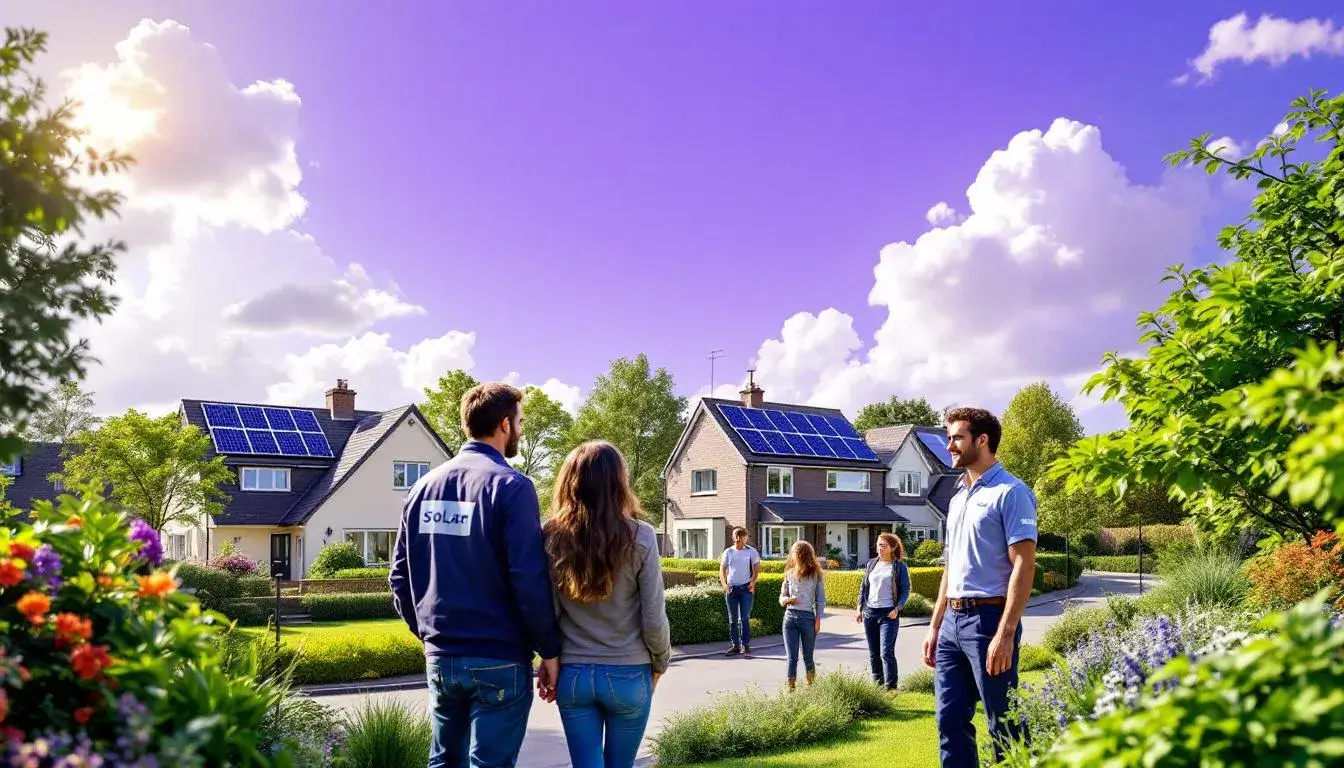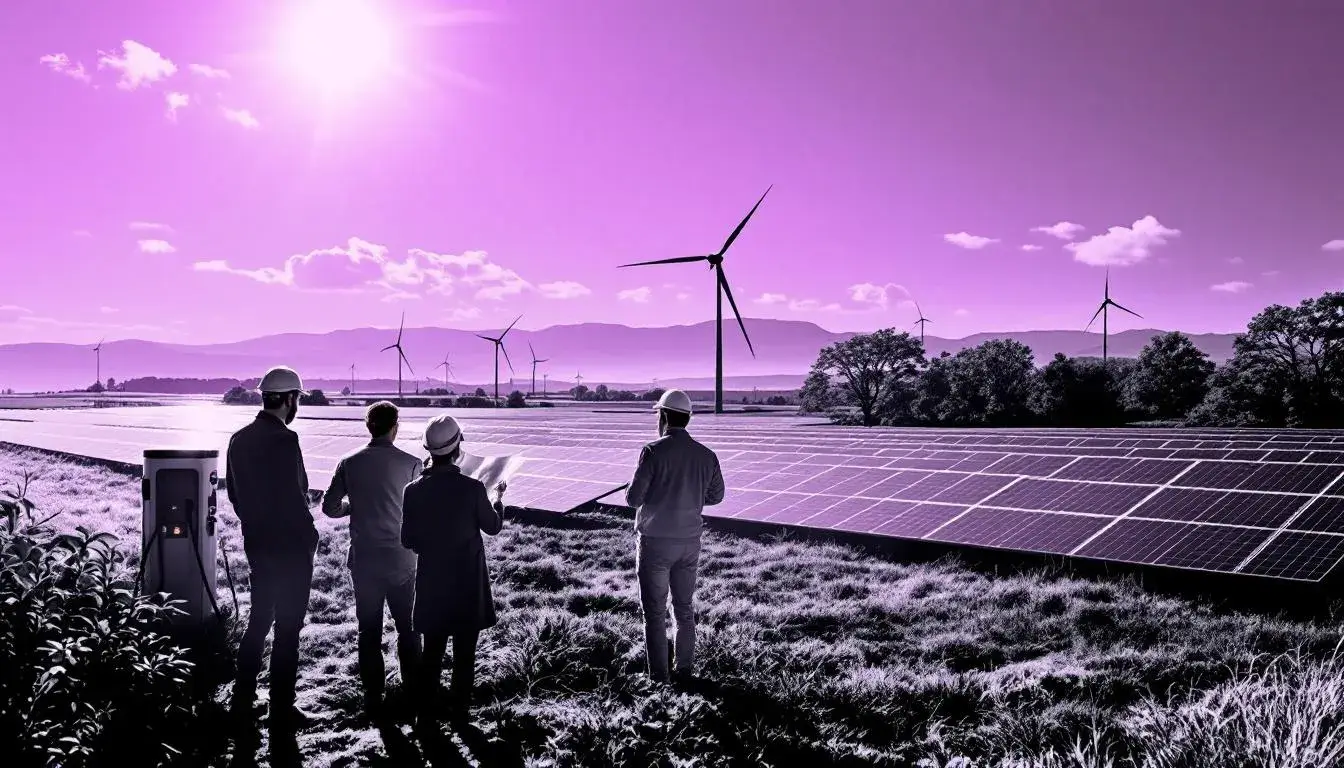
Finance for Solar & Renewables

Why funding green upgrades need not be hard
For many UK households, the idea of adding solar panels, a home battery or a heat pump is appealing but the price tag feels daunting. Upfront costs can run to thousands, and choosing a funding route can be just as confusing as picking the kit. The good news is you do not need to be an engineer or a finance expert to make a smart decision. With a clear view of the main options, what they cost and how they work in practice, it becomes a straightforward household purchase - just one that pays you back in lower bills and greater energy independence.
Energy prices are never entirely predictable. Installing your own generation or efficiency technology can smooth the bumps, cutting reliance on the grid and insulating your home from shocks. Just as important, lenders and brokers now understand this market. Green upgrades are no longer niche, and finance products have evolved to match typical installation sizes and payback periods.
Think of the decision in three parts. First, choose the technology that suits your property and lifestyle. Second, calculate a sensible budget, including scaffolding, electrical works and any extras like bird protection or an upgraded consumer unit. Third, line up funding that covers the cost at a monthly payment you can live with, while keeping total interest in check. If you get those three right, the rest is mainly logistics.
A good rule of thumb: monthly costs should feel comfortable on day one, and savings should make that commitment feel better each year.
Kandoo is a UK-based retail finance broker that can introduce you to lenders for solar, batteries and other home energy improvements. Whether you want a fixed-term loan to keep things simple or a more flexible product, a broker can help you compare rates and terms without hours of legwork.
Who will get the most value
If you own a house or a long-lease flat with suitable roof space or a driveway, and you plan to stay put for a few years, you are in the sweet spot. Families who use more energy in the mornings and evenings often benefit from adding a battery, while home workers may capture more direct solar use during the day. If your boiler is due for replacement, looking at a heat pump with the Boiler Upgrade Scheme grant can be timely. Landlords can also benefit where improvements help meet EPC targets. If your credit is fair to good and your income is stable, mainstream finance is likely available. If credit has been a challenge, a broker may still find options, though costs can be higher.
Ways to pay - simple choices
Unsecured home improvement loan - Fixed monthly payments over 1 to 10 years, no charge on your property.
Secured homeowner loan - Larger borrowing over longer terms, secured against your home.
0% or low-rate promotional finance - Retail-style offers through installers for a set period.
Personal loan via your bank - Straightforward borrowing if you prefer to keep it in-house.
Remortgage or further advance - Add costs to your mortgage at typically lower rates, over longer terms.
Savings part-pay plus smaller loan - Reduce interest by mixing cash with borrowing.
Green grants and tariffs - Boiler Upgrade Scheme for heat pumps and smart export tariffs for solar.
Lease or power purchase agreement (PPA) - Less common for homes, but available in some schemes.
Standout tip: match the finance term to a realistic payback window - not too short, not too long.
What it costs, what it saves, and the trade-offs
| Item | Typical upfront cost | Likely bill impact | Payback window | Key risks |
|---|---|---|---|---|
| Solar PV (3-5 kWp) | £4,500 - £8,500 | 30% - 60% electricity savings | 6 - 10 years | Shading, poor design, inverter replacement |
| Home battery (5-10 kWh) | £3,000 - £7,000 | Boosts self-use, time-of-use savings | 7 - 12 years | Cycle life, tariff changes |
| Heat pump (ASHP) | £7,000 - £12,000 before grant | Big gas reduction, efficient heating | 7 - 12 years | Design errors, insulation needs |
| Solar thermal (hot water) | £3,000 - £5,000 | Summer hot water savings | 8 - 12 years | Lower winter yield |
| EV charger | £800 - £1,200 | Off-peak charging savings | 2 - 5 years | Tariff access |
| Roof upgrades (insulation/rafters) | £500 - £2,000 | Supports system performance | N/A | Structural surprises |
Savings vary with usage, tariffs and property. Export payments and agile tariffs can improve returns. Include maintenance and parts replacement in your budgeting.
Can you qualify, and what lenders look for
Lenders follow a familiar pattern: affordability, credit history and property type. For unsecured loans, expect quick decisions based on income and credit score, typically with borrowing up to around £35,000. Secured homeowner loans can reach higher amounts over longer terms, but they place a legal charge on your home. If you prefer to keep borrowing separate from your mortgage, unsecured options are popular for typical solar-and-battery bundles.
Installers usually ask for a small deposit, with the balance due on completion. If you are pairing finance and grants, such as the Boiler Upgrade Scheme for heat pumps in England and Wales, confirm how and when the grant is applied so your borrowing only covers the remainder. Export tariffs for solar require a smart meter and registration, but they are not finance products and do not affect credit checks.
Kandoo, as a UK-based retail finance broker, can introduce you to a panel of lenders for different needs - from smaller top-ups to full-system funding. If your credit is less than perfect, a broker can help position your application realistically, set expectations on rates and suggest term lengths that keep repayments manageable. Always check early settlement rules and any fees so you can overpay if savings outperform expectations.
From quote to switch-on - the simple steps
Get a survey and fixed, itemised installation quote.
Compare finance options and firm up your budget.
Apply once - broker checks multiple lenders.
Receive approval and confirm your repayment plan.
Schedule installation dates and prepare access.
Installation, commissioning and export registration.
Activate tariffs and set your monitoring app.
Review performance and consider overpayments.
At-a-glance advantages and trade-offs
| Consideration | Pros | Cons |
|---|---|---|
| Unsecured loan | Quick, no charge on home | Higher rates than mortgage |
| Secured loan | Larger sums, longer terms | Your home is at risk |
| Remortgage | Lower rate potential | Interest over many years |
| 0% promos | Very low cost if repaid fast | Fees or higher kit prices |
| Battery add-on | Increases self-use and resilience | Adds cost and complexity |
| Heat pump | Lower emissions, stable running costs | Needs good design and insulation |
Read this before signing anything
Good finance should be boring: predictable payments, straightforward terms, and flexibility to overpay if you wish. Scrutinise the total amount payable, not just the monthly. If you are offered a 0% or low-rate plan through an installer, check whether the product price is higher to fund the promotion. With secured borrowing, remember that stretching costs over a long mortgage term can increase total interest even at a low rate. Ask for written guarantees on performance estimates, panel warranties and workmanship, and confirm who handles inverter swap-out if needed in future. Finally, keep a rainy-day buffer - even green tech can throw up an unexpected cost.
Alternative routes if your first choice does not fit
Part-install now, add battery or extra panels later.
Use savings for panels, borrow for the battery only.
Interest-free support from local schemes where available.
Community energy or shared solar on flats.
Employer green benefits or salary-deduct schemes.
FAQs - quick, plain answers
Q: Will solar work on a shaded roof? A: Partial shade reduces output. Good designers use optimisers and smart string layouts. A survey will confirm realistic yield.
Q: Is a battery worth it without solar? A: Often yes. Time-of-use tariffs let you charge off-peak and use during peak, cutting bills and offering backup resilience when paired with suitable hardware.
Q: Should I remortgage to pay for this? A: It can be cost-effective, but spreading costs over 20-plus years may raise total interest. Compare like-for-like total amounts payable before deciding.
Q: What credit score do I need? A: There is no single number, but fair to good credit helps. Brokers like Kandoo can assess options across lenders with different criteria.
Q: How do export payments work? A: After commissioning, your installer registers the system. With a smart meter, you can join a Smart Export Guarantee tariff and earn for surplus electricity.
Q: What about maintenance? A: Solar needs little upkeep beyond occasional cleaning. Budget for inverter replacement around years 10 to 15. Heat pumps need annual servicing.
Ready to move forward
If the numbers stack up and you like the idea of lower, steadier energy bills, line up your quotes and compare finance options side by side. Kandoo can introduce you to lenders for solar, batteries and heat pumps, helping you match the term and rate to your budget. A few careful checks now will make switch-on day feel like a win.
Small print you should read
This guide is general information, not financial advice. Product availability, rates and eligibility vary by lender and may change. Borrowing is subject to status. For secured borrowing, your home may be at risk if you do not keep up repayments. Always read the lender documentation carefully.
Buy now, pay monthly
Buy now, pay monthly
Some of our incredible partners
Our partners have consistently achieved outstanding results. The numbers speak volumes. Be one of them!


SNS CARAVANS & LEISURE HOMES

CENTRAL SCOTLAND ELECTRICAL LTD









